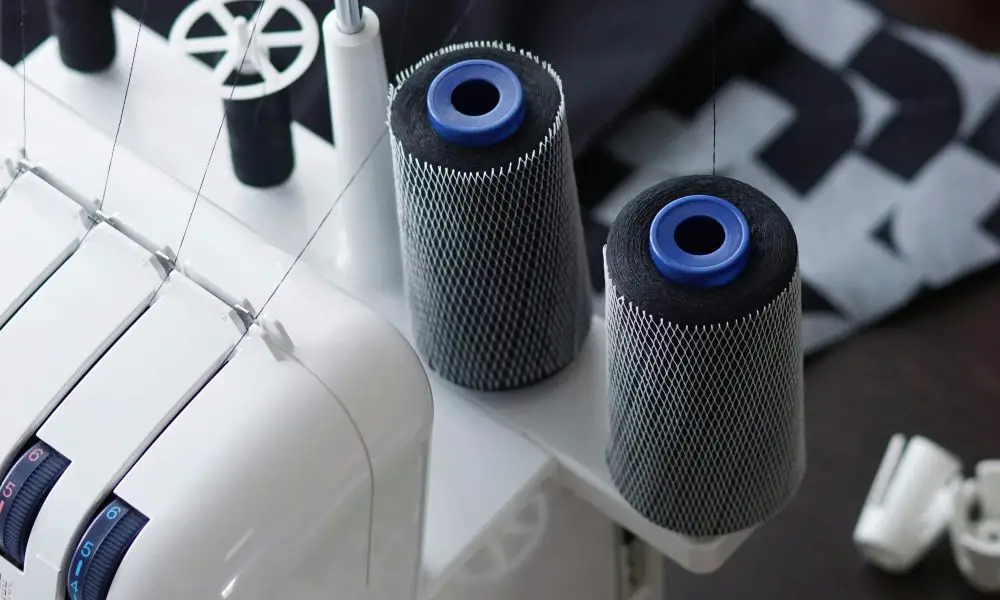Have you ever started sewing to find that your bobbin thread needs to bed up properly? It’s a frustrating experience every sewist encounters occasionally. Your projects can quickly unravel without the locking stitches formed by the top and bobbin threads intertwining. So why does a sewing machine suddenly stop picking up the bobbin thread? The culprit is usually one of several common issues. Read on to learn what causes a machine to miss the bobbin thread and how to fix it.
Main Causes of Bobbin Thread Not Being Picked Up
Improper tension, timing problems, and bent needles account for most missed bobbin thread stitches. But other issues like lint buildup and improper threading can also prevent the bobbin thread from being caught correctly. Let’s look at each of these common causes in more detail.
Improper Bobbin Tension

Balancing the tension on the top and bobbin threads ensures they interlock neatly. Maintaining the right stress level on both threads is essential to achieve this. The bobbin tension refers specifically to how tightly the thread is wound around the bobbin case. It is too loose, and the bobbin thread gets pulled up to the top side of the fabric. It is too tight and can’t unwind smoothly to form stitches.
Signs of improper bobbin tension include loose top threads, uneven stitching, and thread nests on the fabric’s underside. Refer to your sewing machine’s manual for the recommended tension range. A quick way to check is to hold the bobbin case with thread vertically. The thread tail should unwind just slightly when you tap it.
Minor adjustments to the bobbin tension screw can help you achieve the proper tautness. Make changes slowly in a quarter or half turns. Be sure to re-test tension each time to prevent over-correcting.
Bobbin Case Problems
The bobbin case holds the bobbin and also plays a critical role in stitch formation. Lint and debris buildup around the bobbin area can impede the thread flow. This causes the bobbin thread to stitch erratically or not at all.
Inspect the bobbin case for lint fuzzies or obstructions around the tension spring. Gently brush with a soft tool to remove dirt or fragments. Check that the tension spring moves freely and is not bent or damaged. A damaged spring won’t apply consistent pressure on the thread.
Give the entire bobbin case a thorough wipe down before reinserting to prevent leftover lint from interfering with the thread tension.
Timing Problems
Timing refers to the synchronization between the needle and the rotating hook underneath; for every stitch the needle forms, the hook must catch the upper thread at just the right moment to wrap the bobbin thread around it. If the hook timing is off, the threads will miss each other.
Symptoms of lousy timing include skipped stitches, uneven stitch lengths, or knots and tangles forming on the underside of your project. Timing issues are often caused by hitting a needle against the machine plates. This can knock the hook out of alignment.
Consult your sewing machine manual for detailed steps on checking and adjusting hook timing. The process involves carefully rotating the handwheel while aligning marks on the needle bar and handwheel. Leave timing adjustments to a professional service technician if you need clarification.
Bent or Dull Needle
The condition of your machine needle also influences how smoothly it catches the bobbin thread. A bent, blunt, or damaged needle has a more prominent scar in the fabric, making it harder for the hook to capture the threads.
Inspect needles regularly for any wear and distortion in the tip. An easy way to test is by dragging the needle through a piece of fabric. It should pierce the fabric smoothly without tugging or skewing the weave. Dull needles will fray the threads rather than cut between them cleanly.
Always change bent or worn needles right away. Use only new needles recommended for your fabric type. Proper needles glide effortlessly through fabrics and allow for optimal thread interlacing.
Other Potential Causes
While tension, timing, and needles are the main culprits, here are a few other things that can hinder bobbin threading:
- Lint or stray threads around the throat plate and bobbin area. Always keep this area clean.
- Incorrect threading in the top or bobbin. Refer to the diagrams in your manual.
- A bobbin winder left engaged, preventing the case from turning. Make sure it’s disengaged fully to the right during sewing.
- Stretchy fabric that shifts too much, throwing off thread alignment. Use a stabilizer as needed.
Preventing Future Problems
To help avoid skipped stitches and headaches down the road:
- Clean lint and wipe down your machine regularly, especially the bobbin area.
- Replace needles often. Use the appropriate size and type for your fabric.
- Wind bobbins slowly and evenly to prevent tangled threads.
- Check tensions when changing fabric weight or thread type.
- Have a technician adjust the timing if skipping stitches persist.
FAQs
Why does my bobbin thread come up to the top of the fabric?
Incorrect calibration of the bobbin tension can cause the thread to be pulled up through the fabric. Carefully turn the small screw on the bobbin case to tighten the tension little by little. Test after each adjustment until the thread remains neatly on the underside.
I cleaned out my bobbin area, but it’s still not picking up the thread – what should I check next?
Inspect the inner bobbin case, spring, and surrounding area again for any debris or damage, even if you have already cleaned it out. Also, examine the sewing machine needle closely. A dull, bent, or damaged needle can prevent proper threading no matter how clean the bobbin area is.
How do I know if my sewing machine timing is off?
Look for skipped stitches, thread loops on the underside, and uneven stitch length as telltale signs of timing problems. Getting the synchronization right between the needle and bobbin hook requires professional adjustment. By rotating the handwheel and observing the needle bar movement, you can perform a swift test.
Why does lint buildup cause problems with bobbin threading?
Lint and debris around the bobbin case can interfere with the thread tension and flow. This prevents the threads from aligning correctly. That’s why regular cleaning is essential.
How often should you change the sewing machine needle?
Replacing needles every 2-4 projects or even more frequently in case of frequent use is recommended. Always replace bent or dull needles right away for optimal stitching.
Conclusion
Missed bobbin thread stitches often include tension, timing, needles, or lint buildup. By methodically checking each of these common culprits, you can quickly get your machine sewing smoothly again. With proper routine care and maintenance, you’ll have fewer interrupted projects.
Does your sewing machine sometimes fail to pick up the bobbin thread, too? Let us know if these tips help you troubleshoot the problem! Consistently catching the bobbin thread is a must for professional-looking sewn items.
***
Main image: freepik.com




